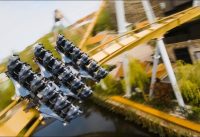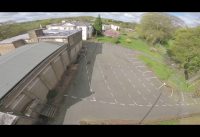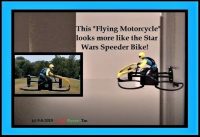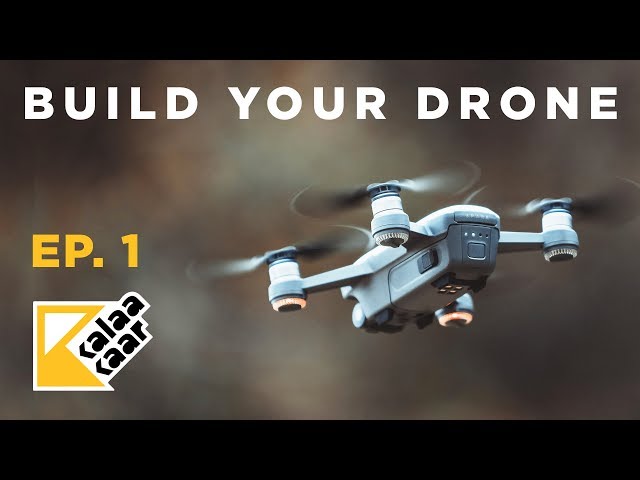Huge thanks to Robotics Arena for making this video happen. Check out their instagram page. https://www.instagram.com/robotics_arena/
If you are interested in making drones and don’t know where to look for here is the video. In this drone series we will discuss everything from the basics to the making of the drone and more. So at the end of the 8th episode you will be fully capable to make your own drones.
——————//——————
Support me on Patreon: https://goo.gl/pNCFh2
——————//——————
Drone Series Playlist:
——————//——————
FOLLOW ME ON:
http://instagram.com/kalaakaar.in
http://facebook.com/kalaakaar.in
http://twitter.com/kalaakaar_in
——————//——————
MORE PROJECTS TUTORIALS and POSTS
——————//——————
We will be learning the basic terminologies of a drone like what is a UAV, types of UAV, how a drone flies, etc. Nope. Not a UFO. We are talking about UAV. In recent years drones have got a lot of popularity. Also India recently got its drone operation guidelines given by DGCA which we will going in details in the future episode.
So what is UAV or Unmanned Aerial Vehicle?
According to the dictionary – A UAV is defined as a “powered, aerial vehicle that does not carry a human operator, uses aerodynamic forces to provide vehicle lift, can fly autonomously or be piloted remotely, can be expendable or recoverable, and can carry a lethal or nonlethal payload” In simple terms Unmanned and Aerial Vehicle – something that flies and can be controlled.
Quadcopters make use of 4 Motors and 4 propellers. Two of these spin clockwise while the other two spin counter clockwise. Motors on the same axis spin in the same direction, as illustrated here.
You must be puzzled why are there 2 sets of propeller? Why not attach all the propellers in the same direction.
The reason is Newton’s 3rd Law. If we attach all the propeller in the same direction the drone will start to rotate in the opposite direction. This is because of force exerted by the rotors and on drone frame. i.e. if you attach all the propellers in the CW direction the drone will start rotating in CCW direction.
Now let’s see the 4 basic movements of a quadcopter
Altitude change – A quadcopter can either hover or adjust its altitude – this is done by applying equal thrust to all four rotors. To hover at a point all 4 motors must generate equal thrust. Which in total should be equal to the weight of the drone thus an equilibrium would be maintained and the drone will hover.
Yaw – Make it turn left or right, the quadcopter applies more thrust to one set of motors. Such that if the quadcopter has to rotate towards right i.e. clockwise – the motors spinning anticlockwise will rotate faster than the motors spinning clockwise. Remember the Newton’s 3rd law. – Now since the motor spinning anti clockwise are producing more thrust the drone will move in clockwise direction.
Pitch: used for moving in forward or backward direction. To pitch forward the motors at the back generate more thrust compared to the motors in the front. This causes the drone to move in forward direction. Similarly to move in backward direction the motors in the front generate more thrust compared to the motors at the back. This causes the drone move in backward direction
Roll – used for moving in Right or Left direction. Similar to pitch. If a drone has to roll right the motors on the right produce less thrust in comparison to the motors on the left. This causes the drone to move towards the right and same for moving towards left.
One thing that makes quadcopters easy to fly is that you don’t actually have to adjust the motor speeds manually as this will be done by the flight controller and the electronics.
We will discuss the controller and the electronics in coming videos. But before that we have to talk about the Structure. Because without that we will not be able to mount anything. So that will be Episode number two in which we will give you a 3D model that you can 3D Print and follow with us. If you like this series then please click on the like button also do check out the playlist for the entire series. We have all resources and instructions in the video description. Hope to see you in the next video. Until next time. Happy Learning!!


![[FPV Racing] Fun training session – Ending with a stretch [FPV Racing] Fun training session – Ending with a stretch](https://quadcoptersource.tesb1.com/wp-content/uploads/2020/04/FPV-Racing-Fun-training-session-Ending-with-a-stretch-200x137.jpg)





Very good series! 3D printing is parts is going to be tricky. But great video ??
Nice one, infact I was thinking of making one for myself and started gathering information. Good to see that you started this series. But one suggestion, don’t do it like Indian opera series, try to compile at least a basic workable drone in 2 to 3 episodes or less. Info is good, but too much info takes out the interest. ?
Verey intterresting … Keep on am looking forward to the next video you are super amazing engineer
Nice
I superb man thanks but wheres the next episode
Nice one… Looking forward for more… Awesome